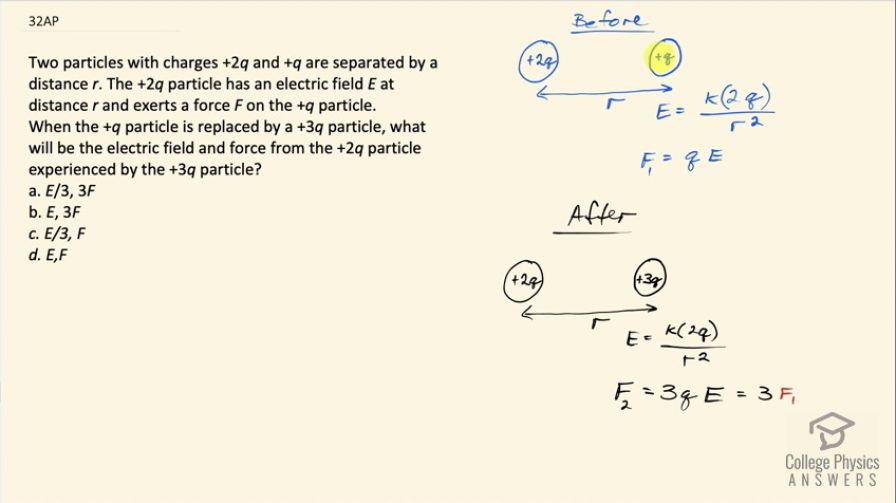Question
Two particles with charges +2q and +q are separated by a distance r. The +2q particle has an electric field E at distance r and exerts a force F on the +q particle.
When the +q particle is replaced by a +3q particle, what will be the electric field and force from the +2q particle experienced by the +3q particle?
- E/3, 3F
- E, 3F
- E/3, F
- E,F
Final Answer
(b)
Solution video
OpenStax College Physics for AP® Courses, Chapter 18, Problem 32 (Test Prep for AP® Courses)

vote with a rating of
votes with an average rating of
.
Video Transcript
This is College Physics Answers with Shaun Dychko. Two particles are separated by a distance r one particle has a charge of plus 2q and the other particle plus q and there's an electric field at this position due to the 2q charge and then the field is Coulomb's constant times this charge 2q divided by this distance r squared and this electric field is there regardless of whether or not there's a charge here which is to say that the electric field doesn't depend on this right-hand charge, it depends only on this left-hand charge. The force that this charge experiences I call it F 1 because this is the first scenario— the before scenario— F 1 is the second charge, which is positive q times the electric field strength. Okay! The after scenario comes when we replace the plus q charge with a plus 3q particle so what will the electric field and force be due to the plus 2q particle in this case? Well, the electric field will be unchanged because the electric field doesn't depend on what this charge is so it's still k2q over r squared. The force that this right-hand particle will experience however is going to be different now because its charge is plus 3q and so we have 3q multiplied by the electric field strength is the force on this second case and q times E is F 1 so we make that substitution and then we can see that F 2 is 3 times F 1 and so the electric field is the same in the second scenario but the force is now 3 times what it was so the answer is (b).